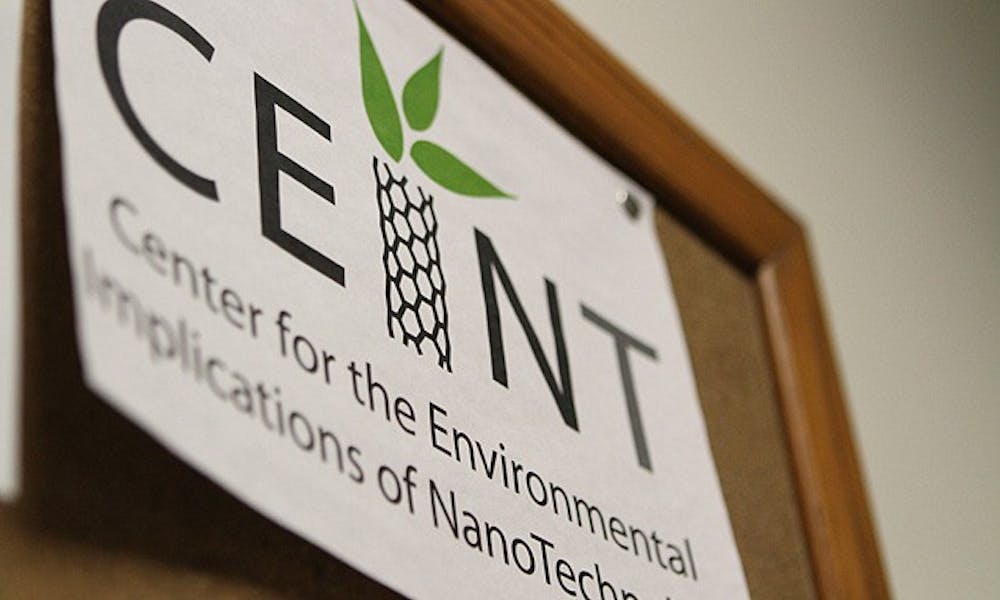As Duke students go about their daily lives, they may not realize that many of their household products contain silver nanoparticles, a material with effects that are still unknown.
At Duke’s Center for the Environmental Implications of NanoTechnology, a multidisciplinary team of scientists, chemists, biologists and engineers have stepped up to take on the challenge of studying these extremely small particles and their effects on the environment.
“This is a revolution of science and tech,” said CEINT Director Mark Wiesner. “We want to get this one right. We don’t want the next DDT.”
Nanoparticles, which are much smaller than human cells, have special properties that have the potential to lead to scientific breakthroughs. However, as these particles continue to be incorporated into various ordinary products, their effects on humans and the environment still remain relatively unknown.
“The goal of CEINT is to help determine the impacts of nanomaterials on natural systems,” said Richard Di Giulio, professor of environmental toxicology and director of the Integrated Toxicology Program for the Nicholas School of the Environment.
CEINT, a collaboration between Duke, Carnegie Mellon University, Howard University, Virginia Tech, the University of Kentucky and Stanford University, is headquartered at Duke and has been conducting research on nanomaterials since 2008. The center focuses primarily on silver nanoparticles, the most commonly found variation of nanomaterials, which are used as antibacterials in many common products such as food supplements, socks, teddy bears, tooth brushes, cosmetics and even baby pacifiers.
Di Giulio noted the obstacles of working with nanomaterials, namely the minute size of the particles and the unpredictable ways they can affect the environment. He said there are many potential dangers with nanoparticles, ranging from disturbing microbial growth in aquatic systems to directly harming plants or animals.
Wiesner also noted that the erratic nature of nanomaterials often complicates research with surprising experimental results.
“What we see in the lab is not what we see in the field,” Wiesner said. “We have seen something that appears toxic in the lab is actually not as toxic in the environment and [vice versa].”
Despite these complications, researchers are pushing forward and making progress with their projects.
Claudia Gunsch, assistant professor of civil and environmental engineering, commented on her most recent findings regarding the impact of nanoparticles on different organisms.
“The work that we have done so far shows that there were visible effects on the plants and the way they were growing and also impacts on microbial communities,” Gunsch said. “The verdict is still out however, and we still have to figure out if these effects could be environmentally detrimental.”
Di Giulio explained that CEINT has three different core themes that their research focuses on. The first looks at the transportation and fate of the nanoparticles based on how their construction and surface coating affects their behavior in different media. The second involves cellular and organismal toxicity and focuses on the direct effects of these particles on individual organisms. The third theme focuses on the ecosystem and how the particles directly affect the environment as a whole.
As a result of its leading role in nanomaterial research, Weisner said the manufacturing industry, U.S. Environmental Protection Agency and REACH, the European Community Regulation on chemicals and their safe use, are carefully watching the center’s progress.
“The real beauty of CEINT is the highly interdisciplinary collection of individuals from multiple universities who are really working collectively to address these important issues,” said Di Giulio “This is only the beginning... and we are just starting research on other nanomaterials as well.”
Get The Chronicle straight to your inbox
Signup for our weekly newsletter. Cancel at any time.

